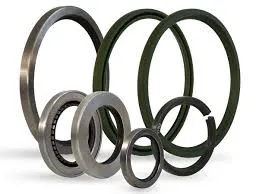12 月 . 03, 2024 14:38 Back to list
Varieties of Oil Seals and Their Applications in Machinery and Industry
Different Types of Oil Seals A Comprehensive Overview
Oil seals, also known as grease seals or shaft seals, are essential components in various mechanical systems. Their primary function is to prevent leakage of lubricants and to exclude contaminants from entering the machinery, ensuring optimal performance and longevity of equipment. This article explores the different types of oil seals, their applications, and key characteristics that make them suitable for specific uses.
1. Rotary Oil Seals
Rotary oil seals are among the most common types used in rotating equipment. They are designed to fit around a rotating shaft and maintain a tight seal against oil leakage. Typically made from flexible materials such as rubber or elastomers, rotary oil seals feature a lip that contacts the shaft, creating a barrier against fluids. Common applications include automotive engines, gearboxes, and industrial machinery.
Unlike rotary seals, static oil seals are used in applications where there is no relative motion between the sealing surfaces. They are often found in flanged connections and areas where components meet, such as between two housing parts. Made from materials like rubber, polyurethane, or Teflon, static oil seals provide an effective seal to prevent fluid leakage, ensuring the integrity of the system.
3. V-Rings
V-rings are versatile sealing elements that can be used in both rotary and static applications. They are shaped like a V and are designed to fit onto a shaft, creating a seal with a housing or another component. The unique design allows V-rings to accommodate misalignment and axial movement while effectively preventing oil leakage. They are commonly employed in applications such as pumps, hydraulic cylinders, and agricultural machinery.
different types of oil seals

4. Lip Seals
Lip seals are a specialized type of rotary seal that includes one or more sealing lips. These seals are designed to maintain a close fit against the shaft, ensuring minimal leakage. Lip seals are often reinforced with metal or fabric to enhance their durability and are widely used in automotive applications, such as wheel bearings and transmission systems.
5. Labyrinth Seals
Labyrinth seals are not traditional oil seals but are used in applications where a seal against oil leakage is needed without direct contact. Instead of relying on a tight fit, labyrinth seals create a series of grooves and channels that disrupt the path of the oil, preventing leakage. These seals are commonly found in turbine engines and high-speed rotating equipment, where minimizing friction and wear is crucial.
6. Mechanical Seals
Mechanical seals provide an advanced solution for preventing fluid leakage, especially in high-pressure and high-temperature applications. Unlike traditional oil seals, mechanical seals consist of two flat surfaces that compress against each other, creating a reliable seal. These seals are commonly used in pumps, compressors, and other machinery where the risk of leakage is significant.
Conclusion
Understanding the different types of oil seals is crucial for selecting the appropriate seal for specific applications. Each type of oil seal offers unique features and benefits that cater to diverse industrial needs. From rotary seals designed for moving parts to static seals that work in non-moving areas, the correct selection of oil seals can enhance machinery performance and prolong equipment life. By investing in the right sealing solutions, businesses can minimize maintenance costs, reduce downtime, and improve overall operational efficiency.